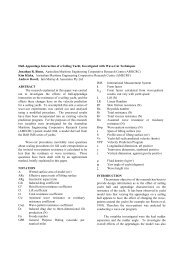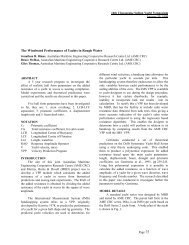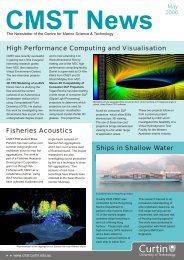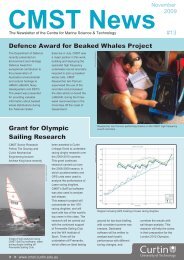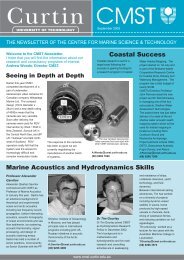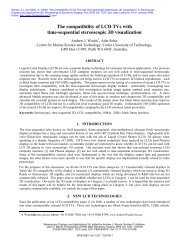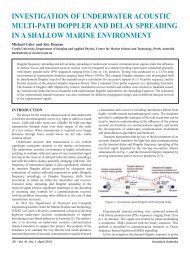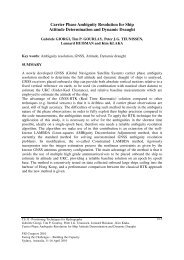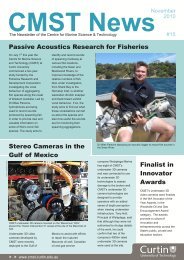Blue whale calling in the Rottnest trench-2000, Western ... - ANP
Blue whale calling in the Rottnest trench-2000, Western ... - ANP
Blue whale calling in the Rottnest trench-2000, Western ... - ANP
You also want an ePaper? Increase the reach of your titles
YUMPU automatically turns print PDFs into web optimized ePapers that Google loves.
callers. The aerial surveys sighted up to eight animals per flight <strong>in</strong> <strong>the</strong> <strong>Rottnest</strong> <strong>trench</strong> over <strong>the</strong><br />
study period (Table 5). Given that <strong>the</strong> blue <strong>whale</strong>s have long down times <strong>the</strong>n <strong>the</strong> aerial surveys<br />
are unlikely to have sighted all <strong>the</strong> animals <strong>in</strong> <strong>the</strong> region. Thus <strong>the</strong> mean of <strong>the</strong> maximum<br />
number of <strong>call<strong>in</strong>g</strong> animals per day of 2.24, will represent less than 28% of <strong>the</strong> total number of<br />
blue <strong>whale</strong>s with<strong>in</strong> <strong>the</strong> region (ie. 2.2/8) to give an upper bound to <strong>the</strong> proportion of blue <strong>whale</strong>s<br />
with<strong>in</strong> <strong>the</strong> <strong>Rottnest</strong> <strong>trench</strong> produc<strong>in</strong>g <strong>the</strong> tonal signals.<br />
To give a display of <strong>the</strong> presence of blue <strong>whale</strong>s through time, <strong>the</strong> power spectral density of each<br />
90 s sample from <strong>the</strong> bluey logger (10 m<strong>in</strong>ute sample separation) was determ<strong>in</strong>ed at a 1.22 Hz<br />
resolution us<strong>in</strong>g 219 averages per 90 s (Hann<strong>in</strong>g w<strong>in</strong>dow), and has been displayed with time on<br />
Figure 47 - Figure 51. The presence of blue <strong>whale</strong>s is <strong>in</strong>dicated by <strong>the</strong> band<strong>in</strong>g at 18-25 Hz,<br />
while <strong>the</strong> 20 Hz click<strong>in</strong>g shows up as <strong>the</strong> <strong>in</strong>tense narrow vertical stripes. It can be seen that <strong>the</strong><br />
two call types dom<strong>in</strong>ate <strong>the</strong> sea noise spectra over this period. The bluey logger ran for almost<br />
five weeks. Although <strong>the</strong> degree of <strong>call<strong>in</strong>g</strong> tapered slightly towards April, <strong>the</strong> sea noise spectra<br />
over <strong>the</strong> 18-80 Hz band was still dom<strong>in</strong>ated by blue <strong>whale</strong> <strong>call<strong>in</strong>g</strong> and <strong>the</strong> 20 Hz click<strong>in</strong>g at <strong>the</strong><br />
end of <strong>the</strong> sampl<strong>in</strong>g period, <strong>in</strong>dicat<strong>in</strong>g how profuse <strong>the</strong> <strong>call<strong>in</strong>g</strong> by blue <strong>whale</strong>s and <strong>the</strong> 20 Hz<br />
click<strong>in</strong>g source was, and its significant impact on ambient sea noise levels <strong>in</strong> <strong>the</strong> region.<br />
44



